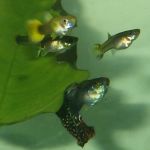People have a tendency of holding rather vulgar-materialistic views about evolutionary processes one of which is that natural selection simply means the survival of the fittest.
One part of the problem is the obvious lack of definition of what is meant by the fittest — which has nearly nothing to do with what your local fitness center is peddling. But that is not the topic of this article.
The more complicated problem is the survival part. Let me explain with an example that I came up with during a conversation over lunch.
What does it mean to endure?
The Roman poet Quintus Horatius Flaccus — known in English as Horace — wrote in his odes: Exegi monumentum aere perennius (usually translated as I have erected a monument more lasting than bronze.).
What did he mean? Surely the parchment or whatever that he used to write on was not more lasting than bronze and could be easily destroyed by fire, or mold, or whatever else it was exposed to in the environmental. Yet his monument still stands, I have obviously just repeated his words. And that is what long lasting means. As long as the information — or in this case even the words literally — are copied and repeated, what he has created continues to exist while e.g. a sculpture made of bronze could have easily been destroyed by now.
This is the same with genes. The individuals who carry the gene die sooner or later, even the oldest living organisms are at most a few thousand years old. Life has started on Earth billions of years ago and some genes are almost that old. It does not mean that the same collection of atoms that form a section of DNA have been in place that long but that the pattern how these atoms are connected have been successfully copied — replicated — over that length of time.
From a gene’s perspective the survival of the creatures that carries it is just the means to an end. What really matters is if the gene gets copied, how many times and how many new individuals will carry it. As such reproductive success is more important on the long run than mere survival. An animal that manages to live to ripe old age but has no children is still a dead end as far as the genes in it are concerned since they have no way to continue after the animal inevitably dies.
Reproductive Success
And here is where the notion of sexual selection comes in. The idea was introduced by the same person who came up with evolution by natural selection in the first place, Charles Darwin, when trying to explain how humans have evolved.
For a simpler, and more obvious, example let us take a look at the peacock. Surely that tail that is delightful to look at, but ridiculously impractical in terms of survival when a tiger is prowling nearby, cannot be an advantage to the peacock. If natural selection is all about survival of the fittest surely any animal so ill fitted to avoid predation would have been selected against and disappeared by now. But this is not the case. In fact peacocks with a fancier tail seem to contribute more, not less, to the next generation.
Fashionable
How is that again? Well, peahens find large tails with lots of eye patterns sexy while they show very little interest in mating with a male with a slightly less flamboyant tail. Thus even though the peacock is risking his life walking around with such an appendage the fancier his tail the more females want to mate with him thus the more his genes, responsible for the fancy tail, contribute to the next generation.
In most animal species that practices sexual selection to any significant degree it is the female who gets to choose. It is simply because she invests a lot more in producing the egg than a male invests in producing his sperm. Thus the female’s reproduction is limited by various resources and her own investment while the male’s is limited by his access to females. It can go the other way around if e.g. after fertilization the male is left holding the eggs — thus has to invest more in the offspring.
Species where parents invest equally in their offspring, e.g. by both gathering food to provide for the growing children, are less prone to the kind of runaway sexual selection discussed here.
If all the father contributes is his genes the prospective mother has to shop around for the most attractive features. If the father shares equally in raising the children the prospective mother does better if she looks for other qualities than the extravagance of the plumage.
The interesting thing is that once such a preference becomes common, fashionable if you will, it becomes nearly impossible to escape from it. Peacocks that have the longest and brightest tails will have the greatest reproductive success simply because it is fashionable (meaning most peahens want a mate with a fancy tail). Females can’t escape either for several reasons. Their mother likely had a preference for long fancy tails so they have a better chance to have inherited a preference for fancy tails. The mother of the peacock with the fanciest tail most likely had a father with a fancy tail and a mother with a strong preference for fancy tails thus any daughter of his will inherit a preference for fancy tails and his sons will inherit the fancy tail itself, but both sons and daughters will carry the genes for both making a long and fancy tail and for preferring one.
Sanity is Doomed to Disappear
Eventually males with fancy tails will do better because the population is full of peahens who like to mate with a peacock with the longest and most colorful tail — that was the definition of it has becomes fashionable. Peahens who would prefer less fancy tailed mates will produce fewer grandchildren if they chose a mate with a plainer plumage since their sons will be less attractive to most of the peahens in the population. Daughters might not do that badly and could start a separate breeding population that prefers shorter tails in their mates, but they really cannot because the reproductive success of their sons is going to be low since most females prefer a long tail, thus they might not find a mate at all (fewer grandchildren for the female who preferred a shorter tail). So whichever trait and preference to the same trait is unfashionable tends to become less so over time.
Unless some environmental factor curbs it this is a runaway system (positive feedback) with increasingly longer and more colorful tails in future generations of peacocks and preference for even fancier tales in future peahens.
Thus a trait such as the peacock’s tail that is an advertisement to predators shouting “come and eat me” can and does become common in spite of being a threat to the survival of the carrier of the genes responsible for it.
Does it have a Practical Use?
In spite of the seeming madness some researchers claim that sexual preference for a mate that seems to have less ability to survive is in fact a way to judge the quality of said mate. That is to say that a peacock which has managed to evade predators and grow into adulthood when it can attract females and reproduce in spite of having the longest and fanciest tail must indeed be more resourceful and ‘fit’ than the other males who could only manage to survive because they lack the flamboyant plumage attracting every predator in the neighbourhood. Thus being able to grow that fancy tail and live to be old enough to show it off to the females of the species is proof enough that the peacock is worthy to become the father of the next generation of peachicks.
It is Everywhere
While the peacock’s tail is one of the most well known such example, and perhaps one of the most obvious ones there are numerous other phenomena that can only be adequately explained by sexual selection since they do not seem to have an immediate survival value.
The song of many birds, the showing off of bright plumage in others, various architectural feats accomplished by the bowerbirds, are all examples of sexual selection in action.
We Humans are Not an Exception
Some claim that for us humans everything that we hold as human, our ability to use language, create poetry, dance, or play music, even our bipedal stance or our lack of body hair are results of sexual selection — biologists claim that nothing else explains how quickly all that has evolved after we split from our relatives who became the two species of chimpanzees.
We like to think that we are better than other animals. But first according to this theory our intelligence has evolved as a result of sexual selection. And second, if our current behavior is any indication the theory cannot be that far off. Fashionable does mean a lot to humans, anyone who watches television can easily tell that lots of advertisements bank on the premise that people will buy anything that is recommended by some celebrity that people perceive as attractive or in some way better than the hoi polloi. So if we evolved humans behave like animals (and other humans can exploit that to their own benefit) why do we think that our more primitive ancestors have shown more sophistication?
Perhaps it is true and our entire human culture that we hold so dear is little more than just another variation on the peacock’s tail.
Even our brain capacity that allowed us to practice science and engineering was once just something sexy — but we eventually found other good use for it that has survival value in itself.
In the Arts?
If our assessment of ourselves is true than all our art was originally invented to attract mates. There is somewhat a disagreement if in humans, like in peafowl, mostly females did the choosing and males had to express the artistic traits or sometimes it went the other way around, but that is not really what I want to get to.
We think that peahens must be crazy to demand that their mates grow tails of ever increasing length and there is something disturbing in their preferences to something beyond what seems to be normal.
The peacock’s tail has become synonymous with sexual selection, particularly the kind that serves no useful purpose beyond making its owner desirable to the opposite sex. Often people, when they want to say that a trait is sexually selected, just say “it is a peacock’s tail” instead.
It is a particularly runaway process if females prefer something unattainable — if the female of a bird would prefer as a mate a male with an even longer tail than what actually exists. Scientist have experimented a lot on some poor African widowbirds (it involved a pair of scissors and a lot of superglue) and found that it is indeed the case for that species.
I would say that human culture has even more extreme examples. I do have the feeling that now we are at the stage where art can reflect on itself. Let us see.
It appears that men who have a pleasant singing voice are attractive to females. The word “rock star treatment” wasn’t invented for nothing — even though it has a component of being attracted to fame, fame usually comes from the voice and not the other way around. If the many followers of a certain very young pop star — who is on the news around here daily for his runs in with the law — are any indication, the ability to sing seems to be attractive even in the absence of other qualities that might make a reasonable female want a male as her mate. But would females prefer an even better voice than a man can actually have?
If arts are any indication of actual human behavior the movie entitled Farinelli, il Castrato certainly demonstrates a good point — even though it is apparently not a historically accurate account of the life of Carlo Broschi (AKA Farinelli), it does give a general idea about the era. Like the birds who had extra feathers glued to their tails a man who can sing beyond the normal human range is shown in the movie to be exceedingly attractive to most females who hear him sing, in spite of the fact that he clearly cannot father any of their children, no matter how desirable his genes might be.
Ever since I have noticed it, I have found it disturbing and funny at the same time that in one of the most emotionally charged scenes, where the title character sings the aria Lascia ch’io pianga by Georg Friedrich Händel, while scenes are shown from his childhood, and what exactly was done to him to preserve his voice, the decoration behind him on the stage is a peacock’s fan that opens up as the song progresses. Either it is a coincidence, or the makers of the movie had some understanding of biology and a strange sense of humor indeed.
Further Readings:
Sexual Selection on www.nature.com.
Predator preference for brightly colored males in the guppy: a viability cost for a sexually selected trait
Evolution and Sexual Selection in the Peafowl article on Wikipedia.
In book form: Richard Dawkins: The Blind Watchmaker, Chapter 8





